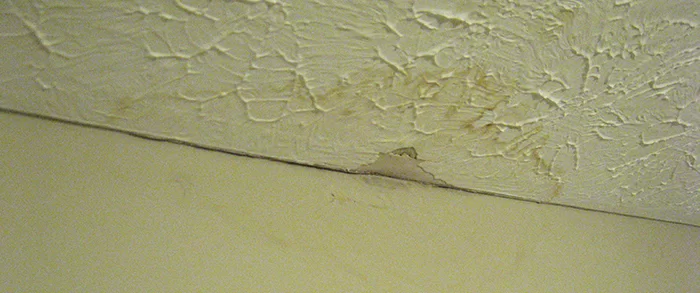A leaking roof causes a host of problems, and the damage doesn’t have to be dramatic, like having half the roof blow away in a storm, to cause trouble. A few shingles that blow away during a thunderstorm can allow water to enter the building. Once moisture is inside your home or business, it combines with mold spores that are always present in the air and they begin to grow and feed on items like drywall, textiles, and paper, which are commonly found in items stored in attics. Because people don’t go into attics on a regular basis, and may not notice missing shingles, the mold can grow and spread without detection for a long time.
Roof Leaks
 The most obvious cause of roof damage is a storm or other disaster, but there are several less dramatic causes of roof leaks, including:
The most obvious cause of roof damage is a storm or other disaster, but there are several less dramatic causes of roof leaks, including:
Broken or missing shingles. Shingles can break or blow away during a storm, but it can be difficult to tell unless you see pieces lying in the yard after the storm. Consider having someone inspect your roof on a regular basis, especially after a bad storm or if you see shingles in the yard.
Improperly installed or damaged flashing. Flashing is the metal placed around chimneys, vents, dormer windows, and skylights to keep moisture out. If it doesn’t fit snuggly in place, moisture will enter through these tiny gaps. Even a small amount of moisture is enough to help mold grow.
Using the wrong roofing materials. Like with any other project, it’s important to use the right materials to get the best results. Certain roof types need certain roofing materials. A roof with a pitch, or steepness, of less than 3:12 requires materials designed for a flat roof. Using the wrong materials is a recipe for leaks.
Ice dams. These are ridges of ice that form at the edge of the roof and prevent melting snow from draining off the roof. This can be caused by clogged gutters that don’t allow water to flow properly through the system. The water backs up into the home, damaging walls, ceilings, and insulation and leading to mold growth.
 It may be easy to spot signs of major roof damage, but signs of roof leaks may be harder to detect. If you see any of these warning signs, there’s a very good chance your home has at least one water leak.
It may be easy to spot signs of major roof damage, but signs of roof leaks may be harder to detect. If you see any of these warning signs, there’s a very good chance your home has at least one water leak.
- Water marks on ceilings and walls, especially on upper floors of the building;
- Discolorations on ceilings and walls;
- Darkened ceiling paint;
- Peeling paint around skylights and dormers windows;
- Cracked, bubbled, or peeling plaster;
- Mold growth around chimneys;
- Wood rot in the attic, skylights, or dormer windows;
- Reddish, rusty looking wood in the rafters;
- Crumbling drywall;
- Mildewy smells in the attic;
- Mold on insulation;
- Drips or other seepage during rainstorms.
Mold Remediation
 Any sign of a leak requires immediate attention to prevent things from getting worse. Without prompt water damage restoration, mold growth starts in as fast as 48 hours after exposure to moisture, causing property damage and health problems. The technicians at ServiceMaster Restoration and Cleaning are trained and registered by the State of Texas to provide comprehensive mold remediation services. Our managers are licensed and work with you to create a highly effective, yet cost efficient mold remediation plan for residential and commercial clients in Houston, TX. Our licensed mold remediation contractor ensures that all of our technicians meet the exacting standards set by the Texas legislature to protect consumers against unscrupulous contractors. We’ll arrive quickly to remove all traces of mold from the building and restore affected items before the damage becomes permanent or the health of people in the area becomes jeopardized.
Any sign of a leak requires immediate attention to prevent things from getting worse. Without prompt water damage restoration, mold growth starts in as fast as 48 hours after exposure to moisture, causing property damage and health problems. The technicians at ServiceMaster Restoration and Cleaning are trained and registered by the State of Texas to provide comprehensive mold remediation services. Our managers are licensed and work with you to create a highly effective, yet cost efficient mold remediation plan for residential and commercial clients in Houston, TX. Our licensed mold remediation contractor ensures that all of our technicians meet the exacting standards set by the Texas legislature to protect consumers against unscrupulous contractors. We’ll arrive quickly to remove all traces of mold from the building and restore affected items before the damage becomes permanent or the health of people in the area becomes jeopardized.
Mold remediation and roof repair costs vary, depending on the type of roof you have, the extent of the infestation, and the amount of work necessary to repair the initial source of excess moisture.

